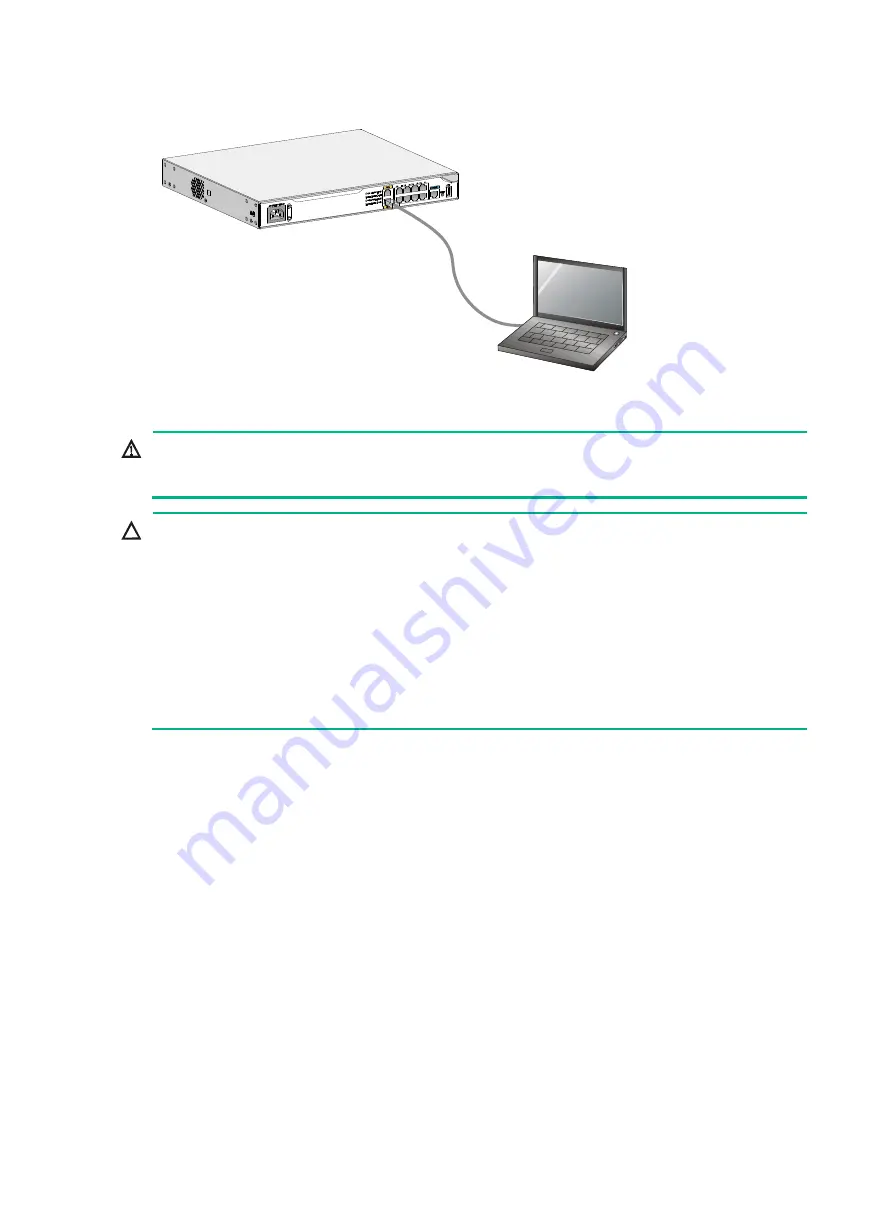
18
Figure 17 Connecting a copper port to a computer
Connecting a fiber Ethernet port
WARNING!
Disconnected optical fibers or transceiver modules might emit invisible laser light. Do not stare into
beams or view directly with optical instruments when the gateway is operating.
CAUTION:
•
To connect a fiber port by using an optical fiber, first install a transceiver module in the port and
then connect the optical fiber to the transceiver module.
•
Insert a dust cap into any open optical fiber connector and a dust plug into any open fiber port
or transceiver module port to protect them from contamination and ESD damage.
•
Never bend an optical fiber excessively. The bend radius of an optical fiber must be not less
than 100 mm (3.94 in).
•
Keep the fiber end clean.
•
Make sure the Tx and Rx ports on a transceiver module are connected to the Rx and Tx ports
on the peer end, respectively.
Only an MSR2600-6-X1 gateway supports transceiver modules.
To connect an optical fiber for a fiber port:
1.
Pivot the bail latch of the transceiver module up so that it catches a knob on the top of the
transceiver module.
2.
Holding both sides of the transceiver module, insert the transceiver module slowly into the
port.
3.
Identify the Rx and Tx ports on the transceiver module. Use the optical fiber to connect the Rx
port and Tx port on the transceiver module to the Tx port and Rx port on the peer end,
respectively.
4.
Examine the port LEDs:
{
If the LED is on, a fiber link has been set up.
{
If the LED is off, no link has been set up. The reason might be wrong connection of the Tx
and Rx ends. Swap the fibers in the Tx and Rx ports at one end.






























